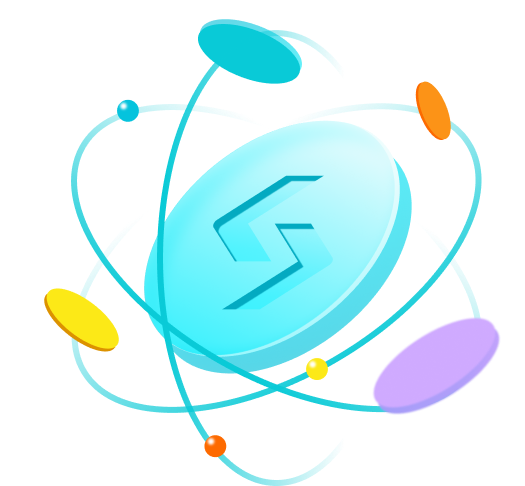Where and how to buy EOS in El Salvador
Step-by-step guide
Step 1: Create a Bitget account.
Step 2: Complete Bitget's identity verification.
Step 3: Place a EOS order through any of the various payment options provided.
 Credit/Debit in the Buy Crypto tab of the Bitget app
Credit/Debit in the Buy Crypto tab of the Bitget app Credit/Debit in the Buy Crypto tab of the Bitget website
Credit/Debit in the Buy Crypto tab of the Bitget website Add a new card to complete your payment on the Bitget app
Add a new card to complete your payment on the Bitget app Enter your bank card details to complete your payment on the Bitget website
Enter your bank card details to complete your payment on the Bitget website


Step 4:Monitor EOS in your Bitget spot account

Alternative methods to obtain EOS in El Salvador
Convert crypto to EOS with Bitget Convert

Swap on-chain assets to EOS with Bitget Swap
Methods to obtain EOS for free

Buy other cryptos
Buy EOS in a different country


How to buy EOS in other countries?
What can you do with EOS?

Store/Hold EOS
Many users hold on to their EOS with the expectation of it increasing in value. You can store your EOS safely on your Bitget account or on our crypto wallet app BG Wallet, the most user-friendly and secure mobile wallet.

Trade EOS
You can trade EOS for 150+ cryptocurrencies on Bitget’s industry-leading, fast, and secure trading platform. Bitget offers many trading pairs for EOS trading to meet your needs.

Send EOS
Yes, Bitget allows you to easily transfer value around the world, fast. You can buy EOS online and send to anyone and anywhere with their EOS address.

Spend EOS
You can also buy goods and services with your EOS. More and more vendors and retailers accept EOS every day.

Donate EOS
Bitget Charity accepts EOS donations for global projects that aim to improve the lives of people in the bottom billion. You can donate EOS so no one misses out on the growth made possible by blockchain.

Learn More About EOS
You can read more in-depth articles on EOS from Bitget Research and study how cryptocurrencies like EOS work on Bitget Academy
Market stats to assist in determining optimal times for purchasing EOS
What is EOSIO (EOS)?
EOSIO is an open-source blockchain platform that offers enterprise-grade performance, fast speed, flexible utility, enhanced security, and high customizability. EOSIO was introduced by Block.one in 2017 as a potentially ground-breaking blockchain network. Its high-profile ICO in 2017 and 2018 attracted many well-known billionaire investors, thereby raising a total of USD 4.4 billion. After one of the most successful fund-raising events in the history of blockchain, Block.one led EOSIO to realize its whitepaper.
The project released the first testnet in September 2017 and four more testnets before the official launch of EOSIO's mainnet in mid 2018. Then in 2020, the upgraded mainnet was launched as EOSIO 2.0.
Contrary to most other blockchains where users have to pay an amount of fee (either high or low) for their transactions to go through, EOSIO users do not necessarily have to pay when they use the blockchain as a service. However, to make sure there is monetization on the part of the blockchain operators and/or dapp developers, they can implement a model where only the senders are responsible for transaction fees, or a "freemium" model where some basic features are free and some more advanced features are not.
Though EOSIO was deemed a greatly potential project and captivated the attention of many investors, there has been a strife between Block.one, the creator of EOSIO, and the EOSIO community for quite some time. The community accuses the creator of not fulfilling their promises, turning away from blockchain development and changing their focus to asset management, while losing key developers in the process. The conflict cannot seem to get to a mutual compromise, so the community elects to
(1) freeze the issuance of 67 million EOS tokens (approximately USD 108 million) that was supposed to be given to Block.one,
(2) rebrand the network from EOS to EOSIO, and
(3) create their own EOS Network Foundation with a new community-appointed CEO.
Despite the alleged malpractice of Block.one, EOSIO under the management of Block.one did a lot of amazing feats. Apart from the quick roll-outs of testnets and mainnets during and after the ICO, there have been constant releases and updates of testnet and mainnets since then. Perhaps most notably is the collaboration with Google in 2020, which triggered a 245% increase in EOS token's price.
After the rise of the EOSIO community and the birth of the EOS Network Foundation, the network has introduced many more features and incentive programs to facilitate use cases on EOSIO. As a result, the price of EOS increased by 20% in the midst of a bear market in 2022.
EOSIO’s Virtual Machine (EOS VM) is a WASM engine built with three interpreters explicitly designed to compile, debug, and optimize smart contracts. The EOS VM enables developers to construct smart contracts 12x faster than the original EOSIO 1.0 blockchain. The EOSIO Ricardian Template Toolkit is a CDT (contract development toolkit) that provides a standardized framework for human-readable smart contracts, and was created to provide a standard interface to authenticate and provide permission for signing agreements.
How EOSIO (EOS) Works
EOSIO is built with a special Proof-of-Stake (PoS) consensus mechanism called Delegated Proof-of-Stake (DPoS) with asynchronous Byzantine Fault Tolerant (aBFT) integrated. These two layers normally work independently yet parallel with each other.
In the DPoS process, block producer voting and scheduling happens. There are two rounds, the scheduling round and the block producing round. In the former round, it takes 126 seconds for the network to elect a schedule by which each chosen block producer is assigned a 6-second slot to produce and sign blocks for the latter round. The second round lasts for 72 seconds, which means a maximum of 12 blocks can be produced and signed in this round.
This special DPoS allows a transaction to reach finality before the nodes are completely validated. This makes the EOSIO blockchain achieve fast speed with less latency.
In the aBFT process, there is also a two-stage process, but for block confirmation:
- First, a last irreversible block is proposed.
- Then the proposed block is confirmed twice by two-thirds of producers from the current schedule and is permanently recorded in the blockchain.
The aBFT layer has another role in the network, that is to signal the DPoS of any change in the producer schedule at the start of the scheduling round.
How Many EOS Tokens Are in Circulation?
EOS is the main token of the EOSIO blockchain. Builders need to own EOS to be granted a certain amount of computational power by the network.
The EOS token has a total supply of 1 billion and it is an inflationary token. In the beginning, the annual inflation rate was 5%, but it was reduced to 1% after a vote by the community in 2020.
Out of the 1 billion EOS token, 90% was released to the investors after the ICO ended and 10% for Block.one vested over a ten-year period. However, the block producers of the network recently reached a consensus to stop the further issuance of Block.one's EOS for negligence, which amounted to 67 million EOS.
How to Buy EOSIO (EOS)
Consider investing in EOSIO (EOS)? It only takes 2 minutes to create an account on Bitget and start trading EOS.
Check out the available EOS trading pairs on Bitget!
Futures market
Spot market
Related EOSIO Pages
Buy EOS in El Salvador with Bitget
How to safely store your EOS
- Sign up and transfer EOS to your Bitget account.
- Alternatively, use Bitget Wallet as a self-custody solution for your EOS.
How to withdraw EOS with Bitget's hassle-free withdrawal process
EOS to local currency
Crypto calculator- 1
- 2
- 3
- 4
- 5













